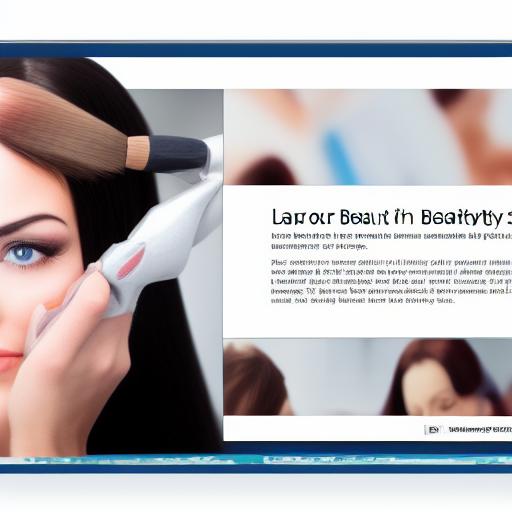
The beauty industry is booming, and competition is fierce. To stand out and thrive, your salon needs more than just talented stylists. You need the right tools – both physical and digital – to streamline operations, enhance customer experience, and maximize profitability. This comprehensive guide outlines the top 10 must-have tools for a successful beauty salon, covering everything from appointment scheduling software to marketing automation.
I. Essential Tools for Streamlined Operations:
A. Appointment Scheduling Software:
This is the cornerstone of efficient salon management. A robust scheduling system allows clients to book appointments online, reduces no-shows, and simplifies staff scheduling. Features to look for include:
- Online Booking: Clients should be able to book, reschedule, and cancel appointments 24/7.
- Calendar Integration: Seamless integration with your personal or team calendars prevents double-booking.
- SMS/Email Reminders: Automated reminders reduce no-shows and keep clients informed.
- Staff Management: Allows you to assign appointments to specific stylists and manage their availability.
- Reporting & Analytics: Track key metrics like appointment volume, client retention, and staff performance.
Examples: Acuity Scheduling, Schedulicity, Vagaro. Consider your salon’s size and budget when selecting a system. Small salons might find a simpler solution sufficient, while larger salons benefit from more advanced features.
B. Point of Sale (POS) System:
A modern POS system handles more than just transactions. It streamlines checkout, manages inventory, tracks sales data, and integrates with other salon tools. Key features include:
- Payment Processing: Accept various payment methods (credit cards, debit cards, cash, mobile payments).
- Inventory Management: Track product levels, automatically generate reordering alerts, and manage stock efficiently.
- Customer Relationship Management (CRM): Store client information, purchase history, and preferences to personalize service and marketing efforts.
- Employee Management: Track employee hours, wages, and commissions.
- Reporting & Analytics: Gain insights into sales trends, popular services, and best-selling products.
Examples: Square, Shopify POS, Lightspeed Retail. Choose a system that integrates with your appointment scheduling software for seamless workflow.
C. Client Management Software (CRM):
Even if your POS system includes CRM features, dedicated CRM software offers more sophisticated capabilities for managing client relationships. Look for:
- Client Database: Centralized repository for client contact information, appointment history, service preferences, and purchase history.
- Marketing Automation: Send targeted email campaigns, birthday messages, and promotional offers to nurture client relationships and boost sales.
- Loyalty Programs: Reward repeat customers with discounts, exclusive offers, and personalized experiences.
- Segmentation: Group clients based on demographics, purchase history, or service preferences for targeted marketing.
- Communication Tools: Facilitate seamless communication with clients via email, SMS, or in-app messaging.
Examples: HubSpot, Salesforce, Zoho CRM. Choose a system that integrates with your other salon tools for a unified client experience.
II. Enhancing the Client Experience:
D. High-Quality Products:
Investing in premium hair care, skincare, and makeup products elevates the client experience and builds brand loyalty. Partner with reputable brands that align with your salon’s image and values. Consider offering retail sales of these products to boost revenue.
E. Comfortable and Stylish Salon Ambiance:
The salon’s atmosphere is crucial. Create a relaxing and inviting environment with comfortable seating, calming music, pleasant lighting, and stylish décor. Pay attention to details like fresh flowers, aromatherapy diffusers, and clean restrooms.
F. Online Booking and Communication:
Make it easy for clients to book appointments and communicate with your salon. Offer online booking via your website and social media pages. Provide multiple contact options (phone, email, social media).
III. Tools for Marketing and Growth:
G. Social Media Management Tools:
Social media is essential for attracting new clients and building brand awareness. Use tools to schedule posts, track engagement, and run targeted advertising campaigns.
- Scheduling: Plan and schedule posts in advance to maintain a consistent online presence.
- Analytics: Track engagement metrics (likes, comments, shares) to understand what resonates with your audience.
- Advertising: Run targeted ads on platforms like Facebook and Instagram to reach potential clients.
Examples: Hootsuite, Buffer, Later.
H. Email Marketing Software:
Email marketing is a cost-effective way to nurture client relationships and promote special offers. Use email marketing software to create professional newsletters, send targeted promotions, and track email open and click-through rates.
Examples: Mailchimp, Constant Contact, ConvertKit.
IV. Essential Operational Tools:
I. Inventory Management Software: Beyond the POS system, dedicated inventory management software can provide a deeper level of control, particularly for salons with a large selection of products. This includes features like automated reordering, detailed product tracking, and cost analysis.
J. Salon Point of Sale (POS) System with Integrated Payments: As previously mentioned, this is crucial. Ensure the system processes all major credit cards, debit cards, and mobile payment methods seamlessly and securely.
V. Learn Business: Your Partner in Salon Success
Navigating the complexities of running a beauty salon can be challenging. That’s where Learn Business (https://learn-business.org) comes in. Learn Business provides valuable resources, guidance, and templates tailored to help businesses like yours thrive. They offer support in areas like:
- Business planning: Develop a comprehensive business plan to guide your salon’s growth.
- Financial management: Learn effective strategies for managing your finances and maximizing profitability.
- Marketing and sales: Improve your marketing efforts and boost sales through targeted strategies.
- Operations management: Streamline your salon’s operations for increased efficiency and productivity.
- Legal compliance: Ensure your salon complies with all relevant regulations and licensing requirements.
Learn Business provides downloadable templates for creating business plans, marketing materials, and financial projections, specifically designed for the beauty industry. These templates save time and effort while ensuring your documents are professional and well-organized. They can significantly assist in every aspect covered in this article, from creating a strong business plan to implementing effective marketing strategies.
VI. Conclusion:
Building a successful beauty salon requires a combination of talent, hard work, and the right tools. By investing in the essential tools outlined in this guide and leveraging resources like Learn Business, you can streamline operations, enhance the client experience, and achieve sustainable growth in the competitive beauty industry. Remember that choosing the right tools depends on your salon’s specific needs and budget. Prioritize the tools that will have the most significant impact on your efficiency and profitability. Regularly evaluate your toolset and adapt as your business grows and evolves. This proactive approach will ensure your salon remains competitive and successful in the dynamic beauty market.


Leave a Reply